#Tamrielic Tales
Text
Let's explore the negative association of milk in Tamriel's Nordic culture.
So, basically, from the dialogue and other sources, we know that drinking milk within Nord cultures is associated with a number of negative perceptions, such as:
Milk is for children.
Milk is associated with weakness.
Milk is not a manly beverage.
This is evidenced by the lines from numerous NPCs in Skyrim.
If you have a disposition of -1 or lower with an NPC, they may say to you: "What do you want, milk drinker?"

There is also the Taunting Adventurer NPC in Skyrim, who is a randomly encountered warrior in the wilderness or in an inn. He says: "What's a milk drinker like you doing out here? Go home to your mother."
But it is worth noting that some Nords such as Rigurt the Brash from ESO oppose the concept behind the insult saying: "Milk-drinker. Why did that become such a terrible Nord insult, I wonder. Milk is good for you! I love the stuff! Not as much as I love mead, but it's a close second. Maybe third."
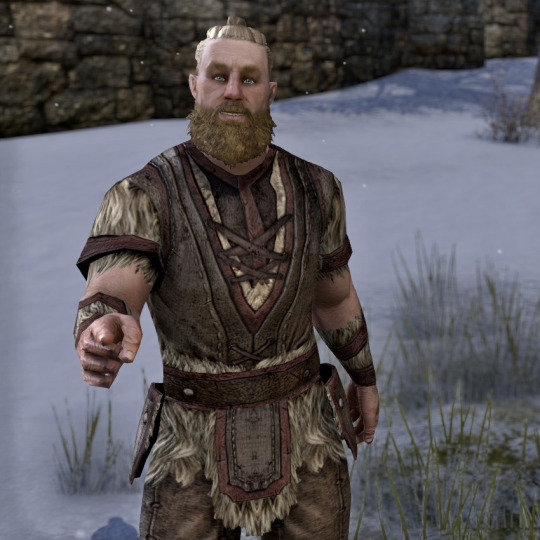
With that, it is reasonable to assume that some Nords avoid drinking milk to prevent being perceived as a cry-baby or a weakling by other Nords, and potentially even by themselves.
As we know, even in real life, milk is important for bone growth. When we delve into medical aspects, calcium is an essential extracellular cation required for muscles to surpass the action potential threshold, enabling contractions and therefore movement.
Skyrim, the homeland of the Nords, also experiences limited sunlight in certain regions. UV radiation from the sun is essential for the activation of Vitamin D from cholecalciferol to calcitriol. This fat-soluble vitamin is crucial for maintaining bone strength and a healthy immune system.
Basically, calcium is important for nerve conduction, blood clotting, muscle contractions, immune functions, and healthy bones.
But how would a race centered around strength and possessing a strong warrior culture maintain their constitution?
Skyrim is abundant with cheese, which is directly made from milk and is also rich in calcium. Digesting cheese breaks it down into its components, facilitating the absorption of calcium into the body.
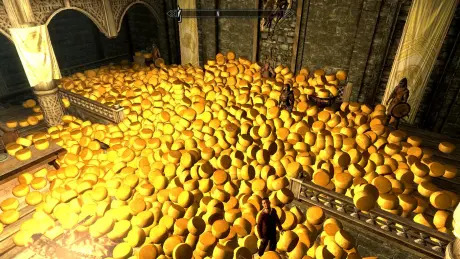
There is also a thriving fishing culture in Riften and Windhelm. Access to the Sea of Ghosts allows access to marine resources like fish and shellfish which could act as substitutes for calcium sources.

I understand that it's a fantasy world, but creating a believable fantasy world can indeed enhance the enjoyment of the experience. By grounding elements of the world in reality, it becomes more relatable and allows us to better connect with the characters and settings.
We can now conclude that Nords are able to maintain their warrior culture despite the cultural bias against milk, which is essential for numerous bodily functions.
#Tamrielic Tales#Gaming#the elder scrolls#the elder scrolls v: skyrim#tesv#skyrim#elder scrolls online#tes online#nords#lore#milk drinker#deep dive
82 notes
·
View notes
Text
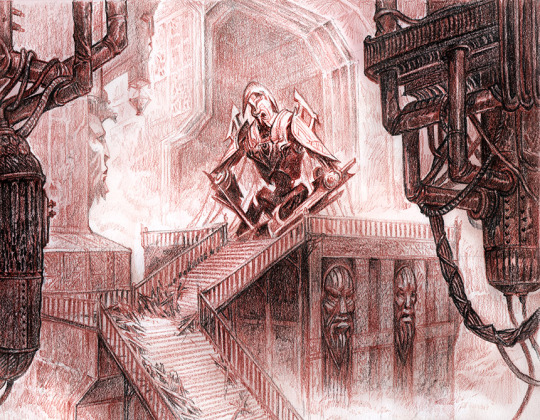
"Dwemer Dungeon"
Art for Tales of Tamriel
Are by Jan Pospisil
#jan pospisil#the elder scrolls#art#concept art#tes#dwemer#dwarven centurion#fantasy#eso#the elder scrolls online#tales of tamriel
304 notes
·
View notes
Note
⭐
Thanks for the ask, anonymous! I'm going to ramble about one of my favorite director's cut portions of Heirs of the Throne that I kind of regret not adding.
I'm not sure how oblique I've been for readers about the identity of Orlaith. I feel like I've been obvious, but if I haven't this might be spoiler-ish.
Orlaith is Lucien Lachance and Wynd's daughter (from What Color is the Night). She's Dark Brotherhood, like her mom and dad were and she inherited the amulet that has Lucien's shade. Originally, I was going to have her loan it to Team Dragonborn in this funny scene where she says she'll send her dad to help them, the amulet is delivered, and confusion and hijinks ensue.
I think I ultimately decided against it because I want to give Orlaith her own story eventually and getting into the Lucien amulet and such would have made Orlaith more than a cameo character. (Although she has a moderately larger role in Heirs of the Throne.)
I likely won't get to Orlaith's story for a long while though. I want to rewrite What Color is the Night before that.
#Director's Cut: Tales of Tamriel Edition#ao3 fanfic#heirs of the prophecy#heirs of the throne#tes v skyrim
3 notes
·
View notes
Text
eso dlcs more like excuse me main questline you'll have to wait while I obsess over the latest dorky little minigame that's of very little consequence in the plot
#eso#between all the collection things and antiquities and now tales of tribute!#im competing with fennorian for biggest dork in tamriel#i mean that affectionately
8 notes
·
View notes
Text
in love with the idea of the db's followers being as remembered in history as the db themself. imagine:
engineers, for generations, mumbling the formula called 'Remiel's Constant' under their breaths as they develop machinery, because it's such a foundational discovery on Remiel's part for a new age of engineering
in contrast, future alchemists agonizing over Xelzaz' thousands of alchemical discoveries a night before their finals, bemoaning why he was so diligent in cranking out formula after formula because now they have so much to memorize
historians and casual history buffs alike locked in discourse on whether or not the last prince of the Thalmor actually colluded with the Dragonborn in the Second Great War to help bring down the Dominion, with vaguely-worded correspondence for evidence
adaptations of the tale where every single follower is at least someone's 'blorbo'
the ballad of Inigo the Brave being a cultural touchstone for Khajiit rep and spawning Tamriel's version of the rogue, underdog hero archetype. even when it's a totally fictional work, if the protagonist (or charming side character) is weirdly charismatic, roguishly handsome, and with a heart of gold, chances are the creator was inspired by Inigo's legacy.
the massive misunderstandings of the dragonborn's original history. Thanks to anti-Thalmor sentiments long after the Second Great War, Nebarra was deemed as a traitor figure to the Dragonborn, but this sentiment was overturned centuries after uncovering contemporaries' journal entries on their friendship
when you ask someone who they think Sir Kaidan was to the dragonborn, there's an equal chance of them firmly believing he was their lover, platonic best friend, or loyal but professional lieutenant. they will have reams of evidence to back it up, no matter which stance they take.
many who have felt that they never perfectly fit into the demands of their faith or community, not just bosmer, resonating with Auri's story. realizing that while they may be an outlier in their own eyes, they can still do a lot of good in the world, and that has to count for something.
common sayings based on (real or not) stories of the followers. if a place is crowded, it's common to joke, "guess the dragonborn's in town."
just. yeah.
#skyrim custom followers#remiel#xelzaz#caryalind thallery#inigo the brave#skyrim nebarra#kaidan 2#auri song of the green
105 notes
·
View notes
Text
My personal opinion has always been that Skyrim lore alone spits in the face of established lore in the TES universe, which is hardly the first time. The retconning of Cyrodiil’s ecology comes to mind immediately.
I’ve long had a headcanon that the tale of the World-Eater Alduin is, if not wrong, then misunderstood. Certainly he’s supposed to be inspired by the Wyrm, Nidhogg, from Nordic mythology.
But what if that was a corruption of his sphere of influence?
Anu and Padomay were Stasis and Change, Order and Chaos, respectively. Paarthurnax and Alduin seem to be a reflection of these primordial siblings, and given they are “children” of Akatosh, that adds a layer of bittersweet tragedy to their roles. Imagining a lonely Akatosh/Auri-el/Anu recreating himself and his lost sibling makes my heart ache.
Going by the idea that Akatosh, Auri-el, and Anu (among others) are just facets and interpretations of the same godly being, him assigning to Alduin the almost identical purpose as what ended up corrupting and causing the fall of Padomay feels cruel.
And beyond strange, given that Nirn is the corpse of Anu’s wife Nir, and their many children. Whom Padomay slew. Why on earth would Anu want anything to devour Nirn, least of all a son he himself created to maybe [fill the void] of his previous loss. And this is the same guy who chucked Lorkhan’s heart to fuck for daring to intervene with Nirn even a little, and established a dynasty of mortals infused with his blood and will to protect Tamriel from Daedra. Who sent Padomay to the Void, whence he can never come back.
Change itself isn’t even an evil by design. Lorkhan’s desire for change won out, even if he was punished for it. Mehrunes Dagon, the Daedra of Change, Natural Catastrophes and Revolutions, is not evil by what he influences, so the same can be argued for Alduin, even if he’s more demigod than Daedra. And demigods are also an established thing, there have been several mentioned throughout Tamriel’s history, like Morihaus Breath-of-Kyne. Alduin claiming to be a son of Akatosh isn’t farfetched.
The idea of a World-Eater who regularly eats the world flies in the face of all lore about Anu. We know this because the Aedra are actual living things in this universe, who influence, appear to, and even talk to the people on Nirn. Auri-el walked among the Aldmer for a long time, just to have a walk. No biggie. The Septim line could all summon his Avatar in dragon-form as part of their bloodline’s contract. Note that the Avatar is one of Protection, not Destruction. The Septims could destroy as many mortals as they liked, even reshape lands and landscapes, but notice how they were still duty-bound to protect Nirn. From forces that could actually harm [her corpse].
So who exactly would benefit from Alduin the World-Eater?
Whose sphere used to be Change, whose corruption led to Nir’s death [the corpse of the world], who wishes for all things to come to the Void, to be Ended, more than anyone else?
Padomay. Sithis.
Hell, even the color palette of Sithis’ legion is the same as Alduin; black and red. The painful irony of the Betrayer Brother corrupting the son Anu created in his very image is just. No words. Even more so if Alduin doesn’t realize, doesn’t know he’s fighting under the banner of his father’s enemy. And what an amusing showdown it’d be; instead of a Dragonborn just Shouting the Problem away for Someone Else To Deal With, it’s trying to talk someone out of continuing down a path they were never meant to tread. A classic “come back to your senses”, only it’s aimed at a giant demigod dragon with a daddy complex.
#the elder scrolls#akatosh#alduin#sithis#i haven’t slept much can you tell#putting the headcanon into words for the very first time#note again this is a headcanon#i do not take criticism#say it with me#alduin = nidhogg is a cop-out#too basic#this is the unhinged fantasy universe#we’re not supposed to be basic here#typing format is a nightmare i know
36 notes
·
View notes
Text
Jungle Cyrodiil? Nah, says Decumus Scotti
Originally posted on r/teslore. Everyone's heard of the late lamented Jungle Cyrodiil, but this is Unjungled Cyrodiil before it ever was supposed to exist.
Another twist in the never-ending Jungle Cyrodiil tale. Perhaps others have noticed before but this one surprised me today.
From A Dance in Fire, first published in Morrowind. Decumus Scotti leaves the Imperial City:
Ten wagons in all set off that afternoon through the familiar Cyrodilic countryside. Past fields of wildflowers, gently rolling woodlands, friendly hamlets. The clop of the horses' hooves against the sound stone road reminded Scotti that the Atrius Building Commission constructed it.
Conventional wisdom has it that Todd changed Jungle Cyrodiil to the temperate climate we see in Oblivion, but here's Ted Peterson writing the Oblivion landscape for a Morrowind text. Scotti has never seen a jungle before he gets to Valenwood.
For Decumus Scotti, the jungle was hostile, unfamiliar ground.
Meanwhile, in Morrowind, sages will tell you
Cyrodiil is the cradle of Human Imperial high culture on Tamriel. It is the largest region of the continent, and most is endless jungle. The Imperial City is in the heartland, the fertile Nibenay Valley. The densely populated central valley is surrounded by wild rain forests drained by great rivers into the swamps of Argonia and Topal Bay. The land rises gradually to the west and sharply to the north. Between its western coast and its central valley are deciduous forests and mangrove swamps.
I have a hunch the out-of-game explanation is that Cyrodiil was never a jungle in the devs' vision in Arena and Daggerfall, and Ted Peterson as a Daggerfall writer, just didn't switch over mentally to it being the jungle Michael Kirkbride and Kurt Kuhlmann had defined it as in the Pocket Guide to the Empire, First Edition. I may be wrong. Please correct me if I am.
But it does put a different complexion on Todd's Oblivion landscape if it was a reversion to the vision they'd started with.
I'm all for Jungle Cyrodiil as the much cooler option, but Oblivion's Cyrodiil looks like it has a long pedigree too.
More comments I wrote from ensuing discussion:
I think you're right about it having multiple climates, in both incarnations of Cyrodiil: the PGE1's and Oblivion's. But I think the truth is simply that there isn't any overarching sense to be made of the whole issue. No disrespect to those who labour in the trenches to make something in-world that works for them, but nothing anyone puts forward seems convincing to me. I just go with "These are separate versions of the setting".
So, yes, the PGE1 has a humid "grassy plain" surrounded by tropical rainforest around the Imperial City. And if we had the same in Oblivion, we could wave away Decumus Scotti's version as a bad description of that. But instead we have an Oblivion landscape around the Imperial City that perfectly matches Scotti's version.
It's hard not to conclude that it was Ted Peterson's vision that prevailed, not Kirkbride's.
and
I find a lot of the responses bewildering, to be honest, trying to find ways in which Scotti's narration can be made to fit with the Morrowind dialogue. Sure, you can do that, playing the in-universe game of making sources fit, but there really was a change in development vision. We get to Cyrodiil and it doesn't look like it was described in Morrowind or Redguard. It does look pretty much like how Peterson described it in Scotti's book.
It's evidence for the development process, however awkwardly or successfully people then can try to make it fit in-universe.
69 notes
·
View notes
Photo
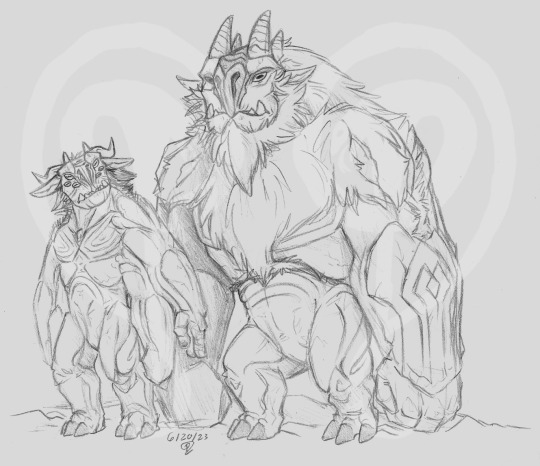
Adventurers occasionally return home with tales of strange beings lurking around the wilds of Tamriel or in places that ancient races constructed. The creatures that they describe do not fit into any category of what scholars know to be atronoch - for no creatures in known texts that are made of stone are not powered by the forces of magic and can also move, talk, and act with sapient intelligence.
My theory is that these beings could be an unknown species, lost to time like the Dwemer, that have resurfaced with the resurrection of the dragons. I will have to collect some coin, and try to seek out a place of sightings to try and uncover extra information so this mystery of the ‘Stonefolk’ can be explored further...
A mini excerpt of a journal talking about TH!Trolls in the TES universe; to be developed!
#;alezart#trollhunters#tales of arcadia#skyrim#tes!au#tes!trolls#stonefolk#blinky#AAARRRGH#blinkous galadrigal
135 notes
·
View notes
Note
It seems like you just want a really PG and only lighthearted fun version of TES. I think it makes the lore and the themes way more interesting and complex when they include such heavy and detestable subject matter. Tamriel isn’t supposed to be a perfect utopia with no bad things and immorality. Go watch Dragon Tales lmao.
Not what I said at all. I'm not opposed to heavy subject matter- people write about things that are distasteful to make a point or for commentary all the time, and I don't have a problem with it. The issue is the handling.
TES' heavy topics are handled with all the nuance and care of a bull in a china shop. The writers aren't genuinely considering these topics' impacts, their systemic weight, anything like that. This is your local card shop's DND DM and his band kid buddies who never grew out of "edgy" racist humor, not someone thinking long and hard about impact. The societal issues in recent TES games only appear like a complex web of fantasy political issues as long as you don't examine them. When you actually do, they're about as shallow as a rain puddle.
You can't write a good commentary on bigotry when you, as the author, believe the subjugated group "deserves it", as the devs have literally put it. Additionally, many of the ingame races pull from some nasty real-world racial stereotypes, which the devs openly and often boil these fantasy races down to (see the khajiit and the way devs refer to them as "druggie cat guys" and portray them almost exclusively as criminals, or kirkbride's igma race). This setup doesn't make for nuanced social commentary. It fails before it's even started, and It's a recipe for a series that not only reprehensibly handles these topics but also fosters a fandom that echoes the devs' sentiments.
I'm not sure why you felt the need to send messages like this to multiple blogs who are critical of TES' content- the devs aren't gonna suck you off for your valiant defense of them. I hope this is an adequate explanation though because it's the last one I'll be giving you
204 notes
·
View notes
Note
Most of what I’m seeing whenever I open tumblr are skyrim and bg3 content. So now an idea of crossover between the two has been planted in my head.
What if LDB got transported to BG3 world, retaining their powers and along with their things (armor, weapon, potions etc.). Whether they also become Tav in this world or not is undecided. So, LDB goes with the bg3 party and becomes a hero of their world as well, helping their companions with their past and all. Until another threat, this time involving LDB’s past. What if Miraak, angry and mad when the LDB was taken from him, found a way to get to bg3 world and wreaks havoc there as he looks for LDB?
Sorry, just wanted to kinda vent and share this idea with you since you’re one of my fav fic writers. Just really want to share it though if you like it and want to make it into a fic, that would be wonderful. Sorry if this comes out like I’m requesting but am really not.
YESSSS god i'm only on act 2 of baldur's gate and i want to do something big when i finish and can do it well but this is such a cool idea. i'm gonna share some of the notes i have laying around about this subject below the cut because i don't wanna potentially spoil any bg3 content.
"Where are the cultists?"
"Which ones?"
"The cultists that were just chasing me!"
"Do you mean the Absolute?"
"No! Miraak's cultists."
"I have no clue what Miraak is."
The Dragonborn stomping their way through the forests with three strangers in tow, clueless as to how they ended up in such a place but willing to accept help. Bombarded with strange terms in every conversation, accepting weapons with unknown enchantments and clothed in armor visibly different from their companions.
They'd get sick of correcting people - they don't know what a drow is. They're a Dunmer and they know nothing about living underground.
"What school of magic are you trained in?"
"School? It's destruction magicka, it just comes naturally. I read a book once I think."
"You must be very powerful to obtain such a spell merely from a scroll." Gale purposefully ignores their pronunciation of magic.
"Sure. I am a very powerful mage. Let's stick with that."
None of their companions know anything about the Thu'um. Or Alduin. Or anything. The Dragonborn stumbles trying to find some link between their worlds but there is nothing tangible, nothing that ties them to home. They resign themself to solving their friends' issues, acknowledging that the only way out must be through.
Meanwhile Miraak scoures every inch of Tamriel in search of the Last Dragonborn. Something had gone horribly wrong during their return from Sovngarde - the portal had opened and closed yet no one came through. He's frantic, concluding that he needed to step through the portal on his own.
Rumors of a new threat, one of unfamiliar power reaches their little party just as they're relaxing after another job done. The Dragonborn is still aware that something had gone wrong but they'd grown comfortable, learning that they liked having a camp to return to when the world became too much. At home in Skyrim they had houses but those were filled with generals and employees, stewards and political figures. Their camp is cozy, companions bickering and sharing food as day wore into night.
Miraak tearing through the Forgotten Realms in search of the Last Dragonborn, worry and rage fueling every step. Outright ignoring unfamiliar laws and summons from strange gods he ventures on, clinging to every rumor of a mysterious dark elf. There's horrible tales of tentacled monsters that remind him of Mora and Miraak fears that the Dragonborn has been taken hostage, surely they're imprisoned and need his help.
Miraak's powers would terrify Faerun, powers unpredictable and fueled by an unknown entity. He leaves a trail of destruction in his wake as he rushes from villages and towns seeking his Dragonborn. He follows stories of an elf who can Shout louder than the gods, frustrated that he's always just a few steps behind.
Miraak would probably meet them somewhere in the Shadow Cursed lands, whether it's Mora's protection or his lack of attachment to this world he finds that the shadows welcome him instead of plaguing him. He skulks through the dark in search of his Dragonborn, too many stories pointing him in the same direction for it to be coincidence.
When the Dragonborn and their friends finally confront this mysterious threat that's been stalking them, warded and high on an assortment of potions, they stop in their tracks. Facing them across the clearing is a mask they'd seen before, hands crackling with sickly green magicka. It's the first familiar thing they've seen since arriving. Miraak feels like home.
Their companions are stunned into silence when their new leader drops their sword, arms open as they bolt across the battlefield. To their horror their friend collapses into the arms of this villain, easily knocking the intimidating mask out of their way.
Gale would probably want to study Miraak. like a bug. Shadowheart would not be a fan i think. Karlach would think he's cool but in a kinda gross way - he didn't really need all those tentacle motifs, right?
these are just my silly little outline points, i'll def change as i get closer to finishing the game but you are so right anon these games need to be smooshed together. i need camp and romance systems with my skyrim men.
33 notes
·
View notes
Text
Do Not Mantle A Daedric Prince
You claim to wish to be a Prince. You know not what you ask. Let me inform you on the matter. Some, in their study of the Heroes of Tamriel, come upon a strange episode in the tale of the Hero of Kvatch. Others, in dealings with Sheogorath, hear odd claims of presence or agency during the Oblivion Crisis. This shall not be a lesson on that period. Instead, young aspirant, let it be a warning against trying to take the place of a Prince.
Souls are primarily to blame for your folly. Doubtless, you know the difference between the black and white Souls that litter your Arena. You have potentially even seen items enchanted with Daedric Souls. This is not quite accurate. Daedra have a Vestige which returns to the Void upon their death, should they not be made into an enchantment by some foolish wizard. This Vestige then travels back to its home plane before reconstituting itself. If you have ever encountered the same daedroth after killing it previously, you now know how.
A daedra can at most create a Vestige, even if their target would normally have an aedric Soul. Most see devoting oneself to a Prince as unwise for this reason. Your Soul will be forfeit upon your death, and even if they wished to keep you around, all a Prince could offer is a Vestige. This is a miserable existence for something that once had a Soul. A Vestige simply cannot do the same things a Soul can. The most common reaction is an endless cycle of painfully falling to pieces and reconstituting, usually over a period of months.
For my part, those who swear themselves to me are usually thrown into the Brain Hallway. Some are powerful enough to form themselves into crawling shibboleths.
Taking this into account, Mantling a Prince is an interesting sort of torture for the mortals who achieve it. Slowly or all at once your Soul morphs into a Vestige, and then becomes an indistinguishable component of the Prince. Your self eroding away, becoming something you do not recognize, until "you" are totally gone. Sometimes, however, a mortal is of enough note that their Vestige alters the Prince in subtle ways.
This returns us to the Hero of Kvatch and Sheogorath. Now, Sheo has been mantled far more than any other prince. The Greymarch always saw him pick some hapless mortal champion to become him while he went off to be Jyggalag for his one time that era. Until the final Greymarch, the mortal would always lose and the "real" Sheo would re-manifest, usually choosing to burst from inside the unfortunate sod in a sort of comedy routine. The mortal would be completely absorbed into Sheo's Vestige, maybe with a few traits picked up that made the Mad God seem a touch more neurotic for a few weeks. Haskill, Sheo's main chamberlain, was a particularly skilled mortal clerk before being eaten. This made him stick in Sheo's craw, as he was far too orderly, and he was quickly coughed up. Seeing this as an opportunity, Sheo put Haskill in charge of the "boring" aspects of running the Shivering Isles.
For the final Greymarch, however, the Mad God happened to pick a Hero. Not one half as strong as Ysgramor, mind, but one of great significance nonetheless. This Hero was enough to repel the Greymarch, breaking Jyggalag's curse. We held a "sorry we turned you into the opposite of your domain for millennia" party afterward, and Jyg was pretty cool about the whole thing.
More importantly, this meant there was no directly returning Sheogorath to pop out of the Hero of Kvatch. You may think this is your "in". Simply find a prince in need of a grand transition, step in and offer yourself up, and that's your ticket. Not so fast. Even if you were a Hero, you should check what Sheo's like nowadays. His sense of fashion has changed slightly (whose hasn't?) but he's just the same as always. Do you think it happenstance that the Hero of Kvatch fell into the exact same behaviors and patternlessness of the old Sheogorath? Sure, he references events from the Oblivion Crisis on occasion, but that's all that remains of that particular Hero now. In a few more centuries they will either be entirely gone or have been coughed back up into a unique Vestige like Haskill.
And you can't make yourself into a new Prince either, there's no space in Godhead for that. At best you'll become a kind of weird non-Prince non-God creature, like the Ideal Masters. I suppose if you're fine with that you can pursue it, but know that almost no one will respect you.
#they're the butt of countless jokes at gatherings of the princes#how embarrassing to apotheose and not even become gods#even mannimarco could do that#the elder scrolls#sheogorath#daedric prince
21 notes
·
View notes
Text
Let's talk about Elsweyr's architecture, specifically how geography influenced it.
In the Elder Scrolls Online base game, players can visit Kenarthi's Roost, which is the starting location for Aldmeri Dominion players. We could easily observe the stilted houses and buildings on the island of the Khajiits. This doesn't really reflect the nomadic culture that majority of the beastfolk have since these kinds of buildings are made to last and are built for prolonged stay in the area. How do I know this?

As a Filipino, I find this style of building especially familiar. Indonesians may also share the same sentiment. In the real world, these stilted buildings are known as "bahay kubo" in the Philippines. They are a staple of provincial life and are designed in a way that prevents floodwater and mud from entering the house. This is why they are built on stilts.
Another purpose of stilt houses is to decrease the occurrence of pests running into the houses. Tropical countries are known for the many insects and small mammals that inhabit them, and stilt houses can help to keep these pests out.
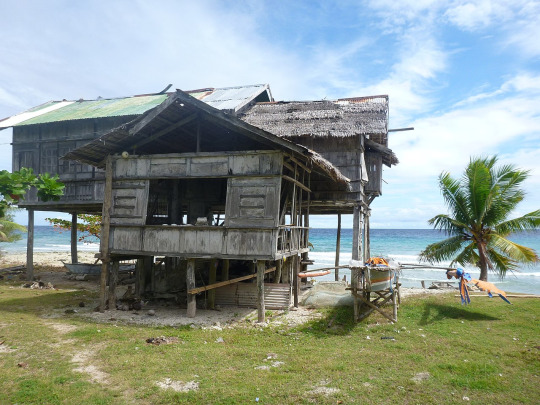
As you can see from the image above, it is quite different from the fantasy world. It is a Filipino stilted house from the Siquijor region. The roof is not exaggerated, and the windows are more open. However, the buildings from Kenarthi Roost are actually very based on real life.
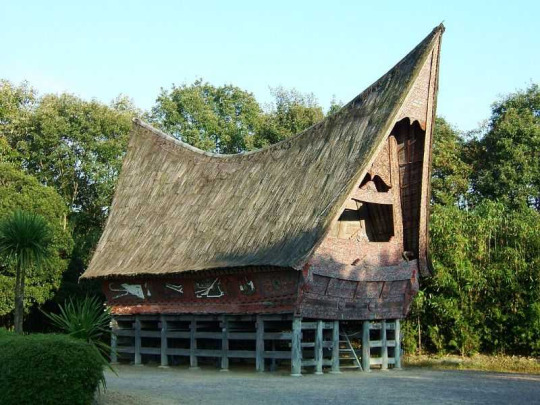
Looking at the image, it is clear where the makers of the game got their inspiration. This is an Indonesian stilted house. The purpose of this kind of roofing is to let the water slide down in times of heavy rains. Observe the stilts on this house, and you can see that they have more support compared to the ones from the Philippines.
Basically, stilt houses are raised off the ground, which allows for better airflow and helps to keep the house cooler. Additionally, the stilts can be used to create a ventilated space underneath the house, which can help to lower humidity levels.
It can also help to regulate temperature and reduce humidity is the use of natural materials. Materials such as wood, bamboo, and thatch are good insulators, which helps to keep the house cool in the dry season and warm in the wet season. Additionally, these materials are porous, which allows for good airflow and helps to prevent moisture build-up.

In this pre-release image, we can see that the columns and stilts are made of stone, and the motifs of the buildings are reminiscent of the styles from Cambodia and its surrounding regions.
Adding to that, the region of Southeast Asia is characterized by heavy rains and storms. In the more tropical parts of Elsweyr, stilted houses are more common. However, as you go up north, the climate becomes less tropical and more temperate, and the houses become less stilted and more made of stone.
Below are some comparisons of Elsweyr to Southeast Asian locations (left is Elsweyr, right is the Southeast Asian location):

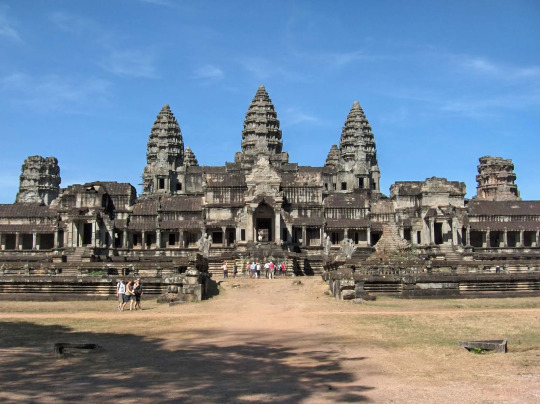
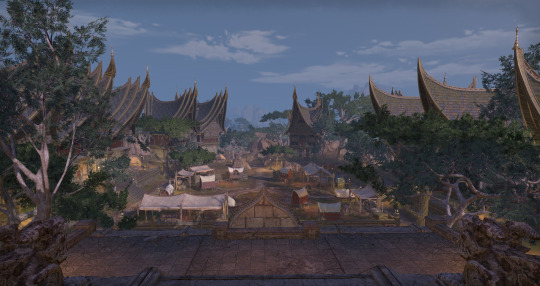

The similarities are quite evident.
While some references say that the Khajiit are based on the Romanian peoples of Europe, their architecture is very much based on Southeast Asian styles. It is also worth noting that traces of Persian, Romani, Indian, and other cultures can be found in Khajiit society.
Some YouTube content also states that the Khajiit can be compared to gypsies in the real world, as they are both considered "fringe people." Another note regarding the architecture is that it is also based on the domiciles of the sea gypsies in the Philippines, the Badjaos.
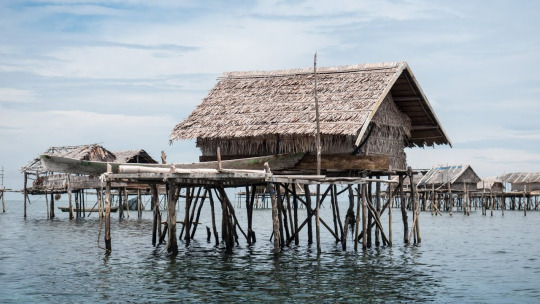
Southeast Asia is a very beautiful region with a great deal of cultural diversity. As someone from the Philippines, I can say from my own experience that foreigners can experience how Western and Eastern cultures merge here.
What other topics should I do next?
#Tamrielic Tales#Gaming#the elder scrolls#elder scrolls online#tes online#skyrim#lore#deep dive#elsweyr#khajiit#south east asia#philippines#indonesia
86 notes
·
View notes
Text

The Mane of Elsweyr
Art for Tales of Tamriel
Art by Jan Pospisil
#jan pospisil#the elder scrolls#art#concept art#tes#the mane#elsweyr#khajiit#tales of tamriel#fantasy#eso#the elder scrolls online
223 notes
·
View notes
Text
Elder Scrolls Online: Lavahni

Khajiit | Aldmeri Dominion | Magicka Nightblade
Lavahni was born into the lineage of leadership in her small village in Elsweyr, with her mother reigning as its respected Clan Mother. Her father, a nomadic merchant in his youth, settled down with Lavahni's mother and the two raised Lavahni until illness claimed his life when she was just a child.
From a young age, Lavahni exhibited a mischievous and quick-witted nature, coupled with a natural charisma that drew others to her. While her mother diligently prepared her for the responsibilities of leadership, Lavahni yearned for the freedom that her father's tales of nomadic travel promised.
Unbeknownst to her mother, Lavahni indulged in unsavory practices to earn her own income, posing as a Khajiiti fortune teller to swindle unsuspecting travelers passing through their village. Her schemes were exposed, however, when one disgruntled customer caused a commotion, catching the attention of Lavahni's mother and igniting a heated argument between them. Lavahni declared her aversion to the prospect of leadership, opting instead to pursue the life of a traveling merchant, like her father had.
Coincidentally, the arrival of the Bandaari, a group of nomadic merchants, presented Lavahni with the perfect opportunity to escape the confines of her village and embark on the adventure she craved. Forming a bond with one of the Bandaari merchants, Lavahni seized the chance to join their ranks under the cover of darkness, leaving behind the expectations and disagreements that had plagued her relationship with her mother. With the Bandaari, Lavahni thrived, utilizing her skills in thievery to acquire goods, and even continuing her fortune-telling charade to bolster their income.
As they traversed the varied landscapes of Tamriel, Lavahni reveled in the freedom and camaraderie of her newfound companions. However, her penchant for mischief eventually landed her in trouble when a heist gone awry led to a chase through the streets, forcing her to seek refuge in the Outlaws Refuge.
It was there that Lavahni crossed paths with Quen, a fellow rogue in search of a partner skilled in thievery. Seeing an opportunity for adventure and profit, Lavahni eagerly joined forces with Quen, setting the stage for a series of daring escapades that would cement her reputation as a formidable and resourceful rogue.
#khajiit#elder scrolls online#eso#teso#tes#the elder scrolls#eso oc#OC: Lavahni#tesblr#elder scrolls online oc#elder scrolls oc#OC aesthetic#tes aesthetic#mine#khajiit aesthetic#tes oc
10 notes
·
View notes
Text
I am once again thinking about a Dragon Cult faction in Skyrim and the dragons being intelligent conquerors rather than random monsters that pop up from time to time, all thanks to Vox Machina so yeah I’m gonna ramble :p
Alduin uses Helgen as his chance to declare his intentions, that his dominion over Tamriel has begun and Skyrim will be the first to kneel. The survivors of Helgen flee and begin to spread the word of what they saw and what was promised. Skyrim is torn by the story as it spreads; there’s hysteria, there’s denial, there’s a frenzy to prepare, and a steadfast refusal to engage with the story at all. People are either terrified or they’re convinced it’s complete hogwash until they see it with their own eyes.
Ulfric knows the legends well enough to recognise the threat and the Stormcloaks are also familiar with Alduin’s story, so they take the threat significantly more seriously than Tullius and the Legion, who aren’t quite so readily familiar with the tales and need convincing by the likes of Rikke and other Nords in the ranks to treat the situation with the full gravitas it deserves. It’s a serious threat, yes, but they don’t realise just how significant Alduin’s return is and what it means for Tamriel on the whole.
During the lull after Alduin’s arrival, Mirmulnir was planning to take Whiterun for himself and was systematically weakening the city's defences before launching his assault, only to end up encountering the one person who could truly kill him. Word of a Dragonborn spreads rapidly and before long, so do the dragons. They rise from their graves and abandon their long-forgotten hiding places, and they take to the sky, intent on taking back what’s their’s.
Falkreath is the first to bend its knee because Siddgeir isn't so stupid that he thinks he can best a dragon, and surely there'll be some benefit to capitulating, just like there was when he sided with the Imperials. He'll take whatever he can get and becomes the first modern Dragon Priest, all to ensure that he retains his power as well as his life. The Dragonborn isn’t safe in Falkreath, not until it seems that there’s an earnest chance that they can best the ancient dragon that resides there. Siddgeir will always throw his lot in with the winning side after all... Whether his doublecrossing actually serves him depends on how the Dragonborn chooses to handle the situation.
Meanwhile Winterhold and Dawnstar are mostly ignored by the first wave of dragons. There are bigger prizes elsewhere. Only once the best territories have been claimed does anyone take an interest in the north, and still Dawnstar doesn’t tract much attention. Winterhold, however, finds itself in a tricky situation - the dragon that arrives is one with a thirst for knowledge. It’s shrewd, cunning, and apparently indifferent to Alduin’s desire to conquer Skyrim. It barters with the Archmage over the Jarl. It offers the College protection from the local Nords and others that might do them wrong, its own knowledge of history and magic, and secrets known only to a dragon. In exchange, they share their secrets with it and let it learn from their troves of knowledge. It’ll leave the village alone provided the people there don’t cause trouble; it doesn’t care to rule. It just wants to learn and be left in peace. It’s a deal that seems almost too good to be true, and the mages can’t tell if this dragon is just like them or if it’s plotting something terrible.
Riften is initially prepared for a dragon to arrive on account of the Stormcloaks preparing the city ahead of time. Then it storms for days on end, a relentless torrent of rain and lightning. People swear they hear a voice in the thunder as their streets flood and the Nords in town put two and two together. Some advise that they should make offerings to try and persuade the dragon to put a stop to the storm. Gold, jewels, whatever meat they can get - they offer it all if it means the storm will stop. And for a time it does... until Jarl Laila puts her foot down and puts a stop to the offerings. Appeasing a dragon won’t save them, after all. And so the storm resumes as it did before, and people are afraid and angry. But still, anyone caught making offerings is punished, and the storms grow worse with every person jailed, so people leave to seek out the beast to offer themselves in service. They become its eyes and ears in the city and report to it when the Dragonborn arrives. When they do, they’re sent to extend an invitation to Laila just as she’s requesting them to hunt down the dragon and slay it; it requests a parley in neutral territory with Laila. It’s up to the Dragonborn to decide whether Riften remains free or if it falls under the control of the dragon.
Markarth is a tempting target, but the city's architecture makes it a tough nut to crack. They have all the steel they need for weapons manufacturing, and are prepared for a siege thanks to the Civil War. To complicate matters, the Reachfolk are as much a problem for the dragons as they are for the Nords; freedom runs in their veins and they wouldn't give it up for anyone. Not for the Nords, and not for a bunch of big ol' lizards either. Any dragon trying to take territory in the Reach has their work cut out for them, both inside the walls and out.
Morthal ends up under dragon control pretty quickly, much like Falkreath. Igrod knows that her tiny community stands no chance at all, so she makes an offering just before the dragon shows up and assumes her role as Dragon Priest. But she's not simply rolling over like Siddgeir. She's biding her time and protecting her people the only way she can, waiting for the one person that can save them.
Solitude and Windhelm remain free on account of the power they've each marshalled. They're both powerful enough to ward off the threat for now, but it won't last forever. Especially if the dragons seize more and more territories.
Other small settlements fall as easily as Morthal and Falkreath, with the communities swiftly capitulating to the dragons that arrive in the hopes of being spared; Kynesgrove only narrowly avoids that fate. People were preparing to bring offerings to the Dragonmound and instead see their would-be-ruler slain once he’s barely fresh from the grave. The villagers are some of the only people in Skyrim that the Dragonborn and the Blades can trust for safe shelter if they’re passing through the area.
With Whiterun and Kynesgrove standing free, along with any other cities that the Dragonborn has chosen to liberate or has a dragon ruling in their name over Alduin’s, the dragons are more than aware that they have an adversary out there, but those that have established themselves and their territory are unwilling to depart in search of them. Instead they use intermediaries; some want the Dragonborn dead to be presented to Alduin at Skuldafn, others think they could be a useful tool or ally, while others are just interested in securing their borders against any potential threats.
#nightingale rambles#skyrim#dragon cult faction#alduin#too many thoughts. too big.#the ideas i have for riften could be a post on its own#and markarth would present some great ideas for its own storyline#and just the idea that each city you tackle - whether you kill the dragon or turn it to your side - in turn progresses the story#and causes change in the world?#ahhhh i love it#like you could kill the dragons. persuade them to leave the cities and leave mortals alone.#or let them continue to rule but in your name instead of alduin's#and all the while the imperials and stormcloaks are still trying to beat the shit out of each other#because yes the world might be ending and we're trying to protect ourselves against the dragons#but fuck you you're still going down
55 notes
·
View notes
Text
Xelzaz: *showing Morana how to reanimate a dead body* Now focus the Raise Zombie spell over where the body's heart would be, and envision it as something you are enforcing your will over. Think of it less like conjuring and Atronach and more like summoning a Daedra or Dremora.
Kaidan: I'd really rather not have another Necromancer in this group.
Morana: *hands shaking as she casts the spell, the dead bandit rising to his feet and slumping over in a daze* I did it!
Xelzaz: Very good. You don't need to practice Necromancy as a skillset if it makes you uncomfortable, but it's a good thing to know in a pinch if you find yourself alone and having killed at least one enemy.
Lucien: Why is it that you know Necromancy anyways, Xelzaz? I thought it was outlawed in Morrowind.
Xelzaz: Reanimation of other Dunmer in Morrowind is illegal, yes. However, animals are more commonly used for Necromancy. And other races, though less common, and much more frowned upon in certain cities. This isn't necessarily considered Necromancy, but Conjuration magic is sometimes used in cultural rituals, with express consent of the deceased. I don't practice these rituals myself, as it is more of a Dunmer tradition.
Taliesin: Consent of the deceased?? You have to ask them if you can have your way with their dead body before they die?
Kaidan: Don't- Don't say it like that, Gods-
Taliesin: How else would you want me to put it???
Morana: It's an ancestral ritual.
Xelzaz: You remember?
Morana: ... Vaguely. I remember when I was a young child, a Velothi Champion was killed in battle, and his last conversation with our Wise Woman before the fight was a request for his soul to be bound to this realm so he could continue to protect his tribe.
Inigo: He must have cared very deeply for his people.
Morana: Enough to brave the Mortal Chill for all eternity.
Kaidan: The Mortal Chill?
Morana: Once a mortal dies, Nirn is no longer their spirit's home. To stay here in the afterlife is a duty carried out by obligation, for the living realm only brings pain and loss.
Lucien: That's a surprisingly specific thing to recall, Morana. Do you think you may be starting to remember your life before the Healers?
Morana: It helps having someone like Xel around. I'd rather not go back to Morrowind myself right now, but getting to learn about Dunmeri history and culture clears some of the fog in my mind.
Xelzaz: I should see if we can pick up some volumes of the 36 Lessons of Vivec at any point. They tell the tale of the early era of Morrowind, and legends of the Hortator, and the Warrior-Poet, among other things.
Lucien: *leaning in close to Inigo* He never answered my question.
Inigo: Yes, I noticed.
Morana: I remember we often kept to ourselves as a tribe. Outsiders were regarded with suspicion, sometimes hostility...
Xelzaz: Yes, some Ashlander tribes can be rather hostile to outsiders.
Morana: ... But, whenever an outsider does a good deed in the eyes of the tribe, they become Clanfriend. *frowns, staring down at her hands consideringly* Clanfriend... *sweeps her hand to point at each member of the team* All of you.
Kaidan: Clanfriend?
Taliesin: *quietly* Did we just get friendzoned?
Morana: ... That doesn't feel right, though. You are not Outsiders.. More like... *huffs, looking frustrated* ... Tribe. Clan... Family?
Inigo: You see us as your family?
Morana: ... Should I not?
Lucien: *lip trembling, looking overly emotional*
Taliesin: Don't tell me you're about to cry.
Lucien: *sniffling* N-No.
Kaidan: Hah. You big sap. *pats Lucien on the shoulder as he passes, wrapping an arm around Morana's shoulders gently* We're glad to be your family, starlight.
Taliesin: Probably the most dysfunctional family in Tamriel, though.
Inigo: *laughs, nudging Taliesin* Would you rather have an extremely boring family that never has any fun?
Taliesin: ... No, probably not.
#skyrim#tes#the elder scrolls#modded skyrim#dragonborn#ldb oc#kaidan skyrim#lucien flavius#inigo skyrim#skyrim taliesin#Morana oc#tw dead body#kinda?#xelzaz skyrim
20 notes
·
View notes